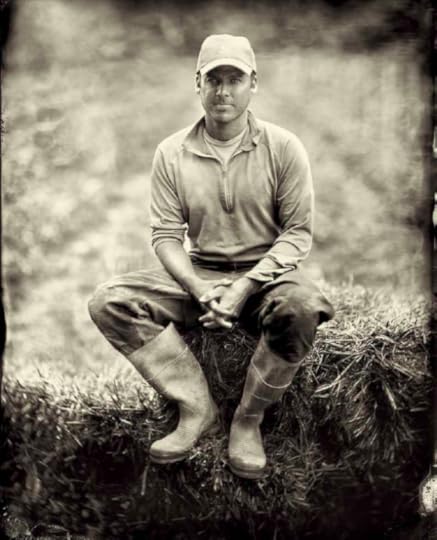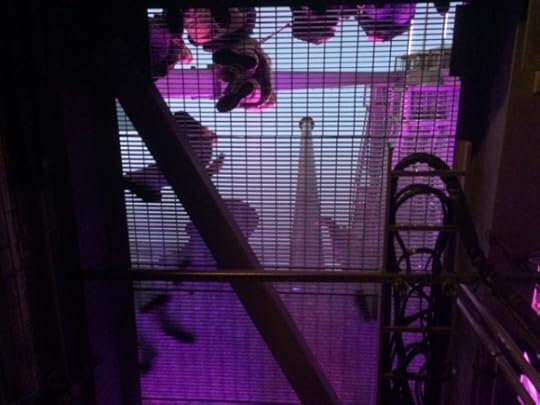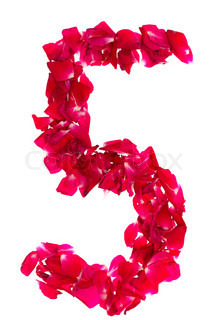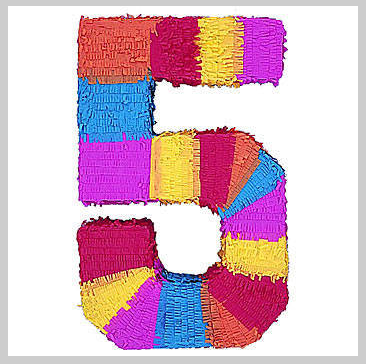Josh Kilmer-Purcell's Blog, page 43
January 21, 2015
Five Beautiful Things
Meet the Flora Forager
Bridget Beth Collins lives in a Hobbit-like home in the quiet borough of Ravenna in Seattle, Washington, with her husband and two sons. At least once a day Bridget ventures out into the surrounding wilderness (or her own small front garden) to forage for flora and fauna. Once collected, she returns home to her studio then arranges her gatherings into captivating compositions for photographs. If it sounds like she lives a beautiful life, she does. I think the images she creates are proof of this. Bridget’s work has been featured in several publications and magazines. She also sells her prints for $22 each at her website FloraForager.com, where you can see much more of her work. I strongly suggest you follow her on Instagram for a daily dose of floral loveliness. Her photos are the perfect antidote to cold winds and winter blues.
January 16, 2015
Home at the Grange

The image shows an interior detail of the Springfield Grange No. 1523 located in Springfield, New York. In the image, the kitchen is in view through a pass-through serving area. In view in the kitchen are two round tables with one chair at the closest table. The stove, cupboards and various kitchen pots and pans can be seen. The wall surrounding the pass-through is decorated with ivy wallpaper. On the reverse of the photograph is handwritten: KITCHEN/SPRINGFIELD GRANGE # 1523/2001/ANDY BAUGNET.
Last year, we were named to the Board of Trustees of the Farmers’ Museum in Cooperstown, NY. The mission of the museum is to cultivate an understanding of the rural heritage that has shaped our land, communities and American culture.
One of our favorite collections of the museum is the vast photo archive.
Plowline: Images of Rural New York is a collecting initiative. The Farmers’ Museum, with the generous support of the Gipson Family, is actively assembling original photography that documents changes in agricultural practice, rural life and farming families in New York State from the 19th century through the present.
Each week on Beekman 1802 we’ll highlight a photo from the collection that not only depicts where WE come from but where we ALL come from.
To learn more about the museum or plan a visit on your next trip to Sharon Springs, click here
January 13, 2015
Five Beautiful Things
Extreme Teapots
I just poured myself a cup of tea from a small, white, plain teapot. I love this little vessel, with its sleek round shape and short spout. It got me wondering, though: what would it look like if it had tentacles, a beak, or…a trigger? Ceramicists have been reinventing and re-imagining the teapot for centuries all over the world, putting their idiomatic stamps on this universal household instrument from Iceland to Nepal. Tea is drunk in almost every nation on earth and has become ritualized in countries like Great Britain, Japan and China. The teapot is central to the tea ritual so it is little wonder that sculptors and ceramicists adore elevating its artistic potential. I’ll keep my little white teapot, but below are five exotic (and strange!) designs that are sure to bemuse and delight.
1. A ‘faux-bois’ teapot by artist Jan Kolenda of Sticks and Stones Studio in Plantation, Florida.
2. An arresting design for all you homicidal tea lovers!
3. A sea urchin teapot by artist Mary O’Malley.
4. Artist Larry Nelson calls this creation Pipe Dream. Witty!
5. Korean artist Ah Leon gives life and personality to this whimsical, woodsy teapot.
From exclusive leaf blends to raw honeys from the farm, see how Beekman 1802 can make your teatime extra special. Click here
January 7, 2015
Five Beautiful Things
The Light and Dark of Winter
As a Canadian, winter is in my blood. I know it very well and have spent a good portion of each one of my years on earth exploring this season’s duplicity: the light and the dark of it. From behind the scrim of a window pane, winter is often breathtakingly beautiful with its pristine layers of white blanketing the landscape, gently guiding our thoughts to a place of reflection. On a bright day, the crystalline, shimmery gleam of ice as it sparkles in the daylight is enough to make me smile. Winter air – so clean and crisp – invigorates and purifies.
The dark side of winter is found in its unpredictable treachery and the slow snare of its melancholy. Temperatures that can kill, storms that can blind and a cloudy palette of grey and white that can sap us of optimism as it seals us indoors are all very ominous challenges to the winter novice.
The artwork of Aron Wiesenfeld captures perfectly, to me, the precarious allure of winter’s atmosphere. It has all of the wonder and whimsy of a snowy wonderland and all of the unsettling tension of a season that can bite us when it wants to. Dance with Winter when she beckons you outdoors and she will dazzle you. But be mindful of her temper.
Click here to see more of Aron Wiesenfeld’s work.
January 4, 2015
Tow the Line

Farmer Charlie Tanney. Brookfield. Brookfield is a town in Madison County, New York. Image is of a man with a team of three horses, harnessed. He holds the reins and walks behind the horses down a dirt road. Another horse is in a pasture in the background behind a rail fence.
Last year, we were named to the Board of Trustees of the Farmers’ Museum in Cooperstown, NY. The mission of the museum is to cultivate an understanding of the rural heritage that has shaped our land, communities and American culture.
One of our favorite collections of the museum is the vast photo archive.
Plowline: Images of Rural New York is a collecting initiative. The Farmers’ Museum, with the generous support of the Gipson Family, is actively assembling original photography that documents changes in agricultural practice, rural life and farming families in New York State from the 19th century through the present.
Each week on Beekman 1802 we’ll highlight a photo from the collection that not only depicts where WE come from but where we ALL come from.
To learn more about the museum or plan a visit on your next trip to Sharon Springs, click here
December 31, 2014
Five Beautiful Things
To me, travel is one of the most exciting aspects of life. When one is given the chance to see a different part of the world, I think that opportunity should be seized. My husband and I recently returned from Puerto Rico, which is where he was born and raised. His family lives there and we visited them for the holidays. While I have been to Puerto Rico several times, this trip was special since it was the first time my family and my husband’s family had ever met! My parents joined us for the last leg of our vacation for their first visit to the island and it turned out to be one of the most memorable experiences of our lives. Below are five of my photographs of sites around Puerto Rico, including the historic fort in Old San Juan (El Morro) which dates to the 1500s. If you have not been to this U.S. Commonwealth nation, I urge you to visit. It is filled with colour, sound and life.
1. One of the old guard posts in El Morro, the historic fort built by the Spanish in the 1500s.
2. The ceiling in the San Juan Cathedral in Old San Juan.
3. Old San Juan has been listed as a UNESCO Heritage Site and is one of the most beautiful places I have been. Blue cobblestone streets wind between pastel-hued abodes that look out over the sea.
4. Off the east coast of the island is a small satellite island called Culebra where a community of fishermen and inn-keepers support the local economy. The beaches here are exceptionally serene and beautiful.
5. I snapped a photo of this charming vignette in a restaurant called La Casita Blanca (The Little White House) in a region of San Juan called Santurce. It is a legendary place that serves authentic Puerto Rican cuisine.
Happy New Year, everyone!
December 29, 2014
People of the Earth
The Hudson Valley, just south of Sharon Springs, has become an epicenter for the local, organic, sustainable food movement. With its rich agricultural land, the awareness for sustainable living, and the growing demand for local, organic food, the ‘locavore’ farm-to-table movement has become a way of life in the Hudson Valley.
A new book by Francesco Mastalia, Organic:%20Farmers and Chefs of the Hudson Valley ORGANIC, spotlights the Hudson Valley as a region at the forefront of this movement. It features the dedicated farmers who are committed to growing and producing food using sustainable methods, and the chefs who echo their beliefs and pay homage to the food they produce.
ORGANIC, spotlights the Hudson Valley as a region at the forefront of this movement. It features the dedicated farmers who are committed to growing and producing food using sustainable methods, and the chefs who echo their beliefs and pay homage to the food they produce.
“Organic” is one of the most misunderstood and often misused words describing food today. In narrating their stories, the farmers and chefs share their philosophy about what it means to grow and live organically and sustainably. “Organic” is not just about growing and producing food, it is about the life of our planet. It is about preserving an agricultural tradition that will safeguard farmland for future generations.
The portraits of the farmers and chefs were photographed using the wet plate collodion process, a technique developed in the mid-19th century. The 17,000-mile journey through the Hudson Valley includes over 100 of its farmers and chefs.
What we loved about the book is that as you look through all of the beautiful portraits, you see a real patchwork of people from all different walks of life.
The artist has shared a few of the portraits. If you are a fan of art or farming, you’ll love the book. Organic:%20Farmers and Chefs of the Hudson Valley Click here to order
Click here to order








<
>
Organic:%20Farmers and Chefs of the Hudson Valley
 For over 100 more portraits and commentary of food and farming, click here to get your own copy of ORGANIC by Francesco Mastalia
For over 100 more portraits and commentary of food and farming, click here to get your own copy of ORGANIC by Francesco Mastalia
December 28, 2014
Having a Ball
The fi�rst Times Square New Year’s Eve celebration was held in 1904. The fi�rst New Year’s Eve Ball lowering celebration atop One Times Square was in 1907. This proud tradition is now a universal symbol of the New Year.
On December 31 each year an estimated one million people will crowd into Times Square, millions nationwide and over a billion watching throughout the world are united in bidding a collective farewell to the departing year, and expressing their joy and hope for the year ahead.
Seven versions of the Ball have been designed to signal the New Year. The first ball was made of iron and wood, weighed 700 pounds, and was covered with 100 light bulbs. In 1920, a 400 pound iron ball replaced the iron and wood ball. In 1955, a 150 pound aluminum Ball with 180 light bulbs replacedthe iron ball. In 1995, the aluminum ball was upgraded with aluminum skin, rhinestones, and computer controls. In 1999, the Waterford crystal New Year’s Eve Ball was created to welcome the new millennium.
In 2007, modern LED technology replaced the light bulbs of the past for the 100th Anniversary of the New Year’s Eve Ball. In 2008, the permanent Big Ball was unveiled atop One Times Square where it sits above Times Square throughout the year waiting to be hoisted for its 10 shining moments.
Our friends at Waterford/Wedgewood recently invited us to a special up close look at the special sphere. Take a look behind the magic:



















<
>
“And now let us welcome the new year, full of things that never were.” ― Rainer Maria Rilke
December 11, 2014
Christmas Party Cocktail
This twist on the famous Arnold Palmer cocktail is truly the stuff of dreams. It combines graciously exotic jasmine tea (don’t use jasmine green tea, though: that’s different!) with homemade ginger syrup in a tall glass—and it’s the perfect showcase for Tennessee sipping whiskey. Fresh lemon juice and a hit of seltzer water give it a refreshing kick—and if you make your ice with jasmine tea, too, you can be sure your cocktail won’t get watered down over the course of sipping. Although its taste is sophisticated, there’s nothing complicated about this drink; it’s as easy to make as its ingredients are to find. It is a great match for salty snacks, so it makes a nice aperitif. Alternatively, enjoy it on its own; it’s just the thing to accompany a lazy afternoon of daydreaming.
Ingredients
Ice made from strongly brewed jasmine tea
2 ounces (60 ml) Tennessee sipping whiskey
1 ounce (30 ml) lemon juice
½ ounce (15 ml) Ginger Honey Simple Syrup (see below)
2 ounces (60 ml) strongly-brewed, cooled jasmine tea
1 ounce (30 ml) seltzer water
Lemon pinwheels drizzled with a little Ginger Honey Simple Syrup
Instructions
Add the jasmine tea ice to a tall Collins-style glass, and then add the whiskey. Top the whiskey with the lemon juice, and pour the chilled Ginger Honey Simple Syrup and cooled jasmine tea over the mixture. Finish with the seltzer water, and garnish with the syrupy lemon pinwheel. Then, just kick back and relax.
to make Ginger Honey Simple Syrup
Make a batch of Raw Honey Simple Syrup. Add ¼ cup (25 g) finely chopped fresh (preferably young) ginger. Pour the mixture into an airtight container, and let it steep in the fridge for a couple days. Strain before using. Use within 2 weeks.
to make Raw Honey Simple Syrup
In a medium saucepan, combine 1 cup (340 g) honey with ½ cup (120 ml) water and simmer, mixing until the honey has dissolved. Let the mixture cool. Keep refrigerated in an airtight container for up to a month.
for more mouth-watering, thirst-quenching cocktails, order your copy of Warren’s new book, by clicking here
December 10, 2014
Five Beautiful Things
Agnes Miller-Parker
You may not know her name, but the wood-block prints of Agnes Miller-Parker (1895 -1980) are among the most beautiful examples of the 20th Century. (Female print makers do not often hold the gaze of art historians, which is why many of them are not very well known.) Miller-Parker was born in Britain and studied at the Glasgow School of Art in Scotland. In 1926 she began to publish her first editorial prints in journals and magazines and by the early 1930s she was illustrating books, such as The Fables of Esope and Welsh Gypsy Folk Tales. I’m really dazzled by the intricacy and liveliness of her work. There is also something intangibly ‘Beekman’ about her style. Below are five of her beautiful prints.














